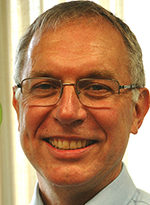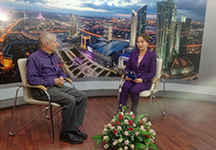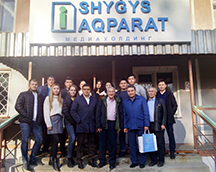
Freedman with journalists at government-owned newspapers
Knight Center director Eric Freedman recently spent two weeks as a guest lecturer at East Kazakhstan State University (Amanzholov University), where he spoke to journalism and languages students on such topics as environmental journalism, professional ethics, “peace” versus “war journalism,” social media and cyber-dissent, transborder investigations and press freedom.
The university, founded in 1952, is in the industrial city of Oskemen, Kazakhstan.
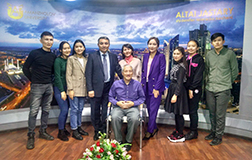
Freedman with journalism students and faculty at East Kazakhstan State University
His visit, funded by a grant to the host university from the Kazakhstan Ministry of Education and Science, included two seminars on research and scholarly publications for faculty members and visits to two high schools, Nazarbayev Intellectual School and the Nurorda School. He also judged a debate at the American Corner of the Pushkin Library and gave television and newspaper interviews.
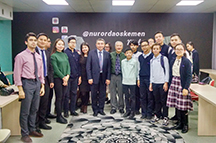
Freedman with high school students and teachers at Nuroda School.
Freedman, who has been teaching, doing research and training journalists and students in Central Asia since 2002, also toured the headquarters and museum of the two government-owned newspapers in the oblast (district) and spoke at an anti-corruption forum hosted at the university.

